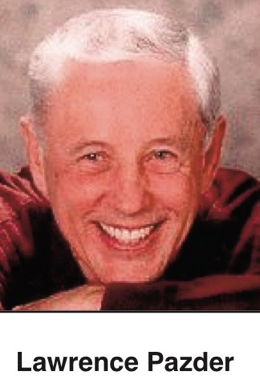Rascals case in brief
In the beginning, in 1989, more than 90 children at the Little Rascals Day Care Center in Edenton, North Carolina, accused a total of 20 adults with 429 instances of sexual abuse over a three-year period. It may have all begun with one parent’s complaint about punishment given her child.
Among the alleged perpetrators: the sheriff and mayor. But prosecutors would charge only Robin Byrum, Darlene Harris, Elizabeth “Betsy” Kelly, Robert “Bob” Kelly, Willard Scott Privott, Shelley Stone and Dawn Wilson – the Edenton 7.
Along with sodomy and beatings, allegations included a baby killed with a handgun, a child being hung upside down from a tree and being set on fire and countless other fantastic incidents involving spaceships, hot air balloons, pirate ships and trained sharks.
By the time prosecutors dropped the last charges in 1997, Little Rascals had become North Carolina’s longest and most costly criminal trial. Prosecutors kept defendants jailed in hopes at least one would turn against their supposed co-conspirators. Remarkably, none did. Another shameful record: Five defendants had to wait longer to face their accusers in court than anyone else in North Carolina history.
Between 1991 and 1997, Ofra Bikel produced three extraordinary episodes on the Little Rascals case for the PBS series “Frontline.” Although “Innocence Lost” did not deter prosecutors, it exposed their tactics and fostered nationwide skepticism and dismay.
With each passing year, the absurdity of the Little Rascals charges has become more obvious. But no admission of error has ever come from prosecutors, police, interviewers or parents. This site is devoted to the issues raised by this case.
On Facebook
Click for earlier Facebook posts archived on this site
Click to go to
Today’s random selection from the Little Rascals Day Care archives….
Click for earlier Facebook posts archived on this site
Click to go to
Today’s random selection from the Little Rascals Day Care archives….
‘Hunt for child abusers has become national pathology’
 Oct. 9, 2013
Oct. 9, 2013
“We are a society that, every 50 years or so, is afflicted by some paroxysm of virtue – an orgy of self-cleansing through which evil of one kind or another is cast out. From the witch-hunts of Salem to the communist hunts of the McCarthy era to the current shrill fixation on child abuse, there runs a common thread of moral hysteria.
“After the McCarthy era, people would ask: But how could it have happened? How could the presumption of innocence have been abandoned wholesale? How did large and powerful institutions acquiesce as congressional investigators ran roughshod over civil liberties – all in the name of a war on communists? How was it possible to believe that subversives lurked behind every library door, in every radio station, that every two-bit actor who had belonged to the wrong political organization posed a threat to the nation’s security?
“Years from now people doubtless will ask the same questions about our present era – a time when the most improbable charges of abuse find believers; when it is enough only to be accused by anonymous sources to be hauled off by investigators; a time when the hunt for child abusers has become a national pathology.”
– From “From the Mouths of Babes to a Jail Cell” by Dorothy Rabinowitz (Harper’s Magazine, May 1990)
‘Michelle Remembers’ spread its myth widely
 Nov. 15, 2015
Nov. 15, 2015
“In 1977 the Canadian psychotherapist Lawrence Pazder published a memoir of one of his patients, ‘Michelle Remembers.’…
“Michelle’s memoir had been preceded by a number of other books by survivors of child abuse, such as ‘The Three Faces of Eve’ (1952) and ‘Sybil’ (1973)…. What Michelle remembered, though, set her book apart. The narrative included lurid details of years of sexual abuse, satanic ritual, animal sacrifice, serial rape, baby killing and a climactic final battle between the devil (complete with horns and tail) and the Virgin Mary…
“Michelle had apparently repressed the memory of these events for something like 20 years. Only after sessions with her therapist (whom she later married) did the memories reemerge, from the couch to the printed page.
“‘Michelle Remembers’ was the first to really discover satan, and many of its narrative moments would recur, endlessly, in the following decade in a series of expanding claims of a secret satanic conspiracy for world domination. As one law enforcement official put it, ‘Before “Michelle Remembers,” there were no Satanic child prosecutions. Now the myth is everywhere.’ ”
– From “From History to Theory” by Kerwin Lee Klein (2011)
Board couldn’t see Betsy Kelly ‘minus her publicity’
Sept. 13, 2013
“I am urging you to treat Elizabeth Kelly as you would treat anyone else with the same case file. I am asking you to demonstrate that we are all ‘equal under the law.’ Any other inmate with the same sentence and clean record would have been eligible for parole the minute she walked through the gates of the prison…. I am appealing to you not to withhold that which she would otherwise likely receive — minus her publicity, minus the rhetoric of politicians. I am imploring you not to deal more strictly with her than with others simply because she is Elizabeth Kelly.”
– From a letter to the North Carolina Parole Commission by Jane W. Duffield of Raleigh (April 5, 1994)
The Parole Commission proved unable or unwilling to consider Betsy Kelly’s case “minus her publicity, minus the rhetoric of politicians.” Bill Hart, vengeful over her unwavering insistence that she was innocent, reneged on a plea agreement not to contest her release, and the Parole Commission obediently sent her back for seven more months of wrongful imprisonment.
Sheriff, mayor escaped prosecutors’ dragnet
May 22, 2013
“One of the biggest strengths for the prosecution was that these children would go home every night to a parent or parents fully aligned with the prosecution theory. The story line would be reinforced at dinner, bathtime, playtime, bedtime….
“The children were, of course, separated from further contact with the accused day care workers, and by the time of trial their young memories of the actual person had been replaced by the fictional person, if they could remember who the perpetrators were supposed to be at all.
“At one point, a Little Rascals child pointed to a picture of the sheriff as one of the defendants; this identification, of course, was selectively ignored.”
– From “The Metanarrative of Suspicion in Late Twentieth-Century America” by Sandra Baringer (2004)
Edenton’s mayor was also among the initially accused, who numbered either 20, 24 or “dozens,” depending on the source. The inevitable question: How did prosecutors come to choose the Edenton Seven? Who lucked out – and why?











0 CommentsComment on Facebook